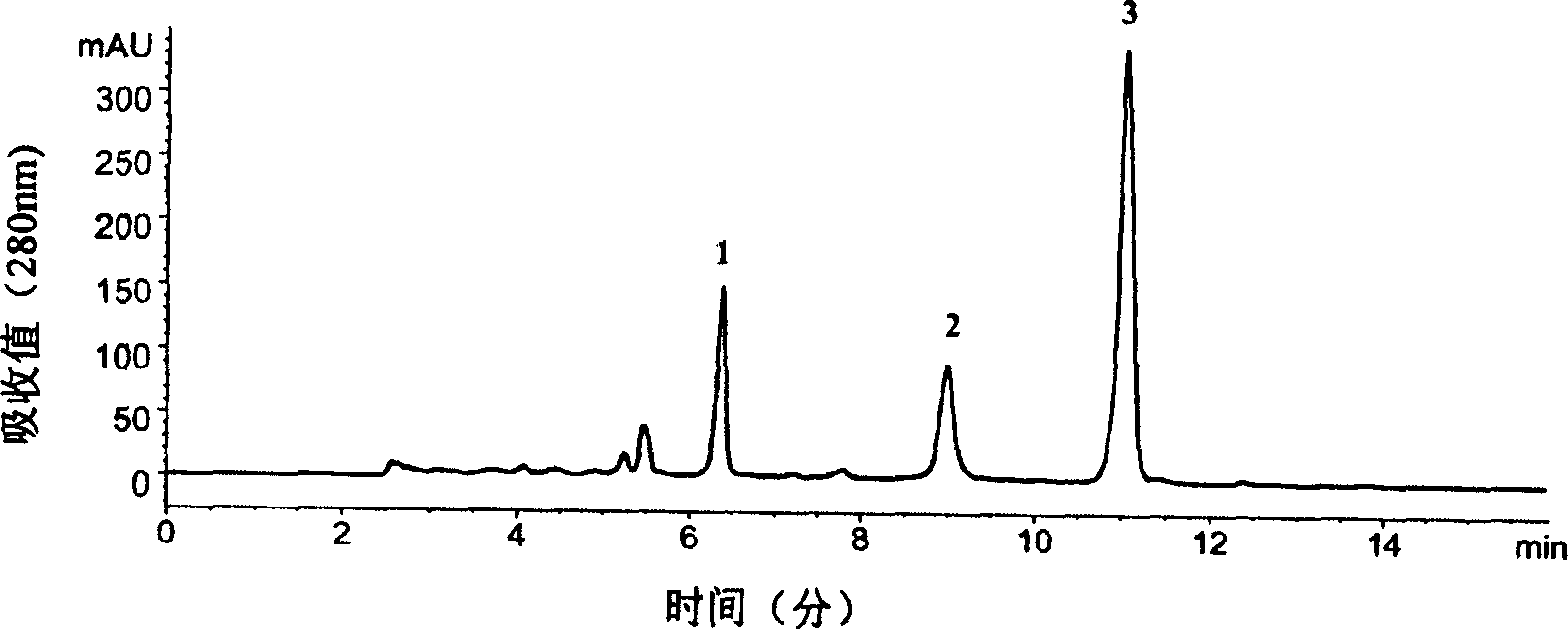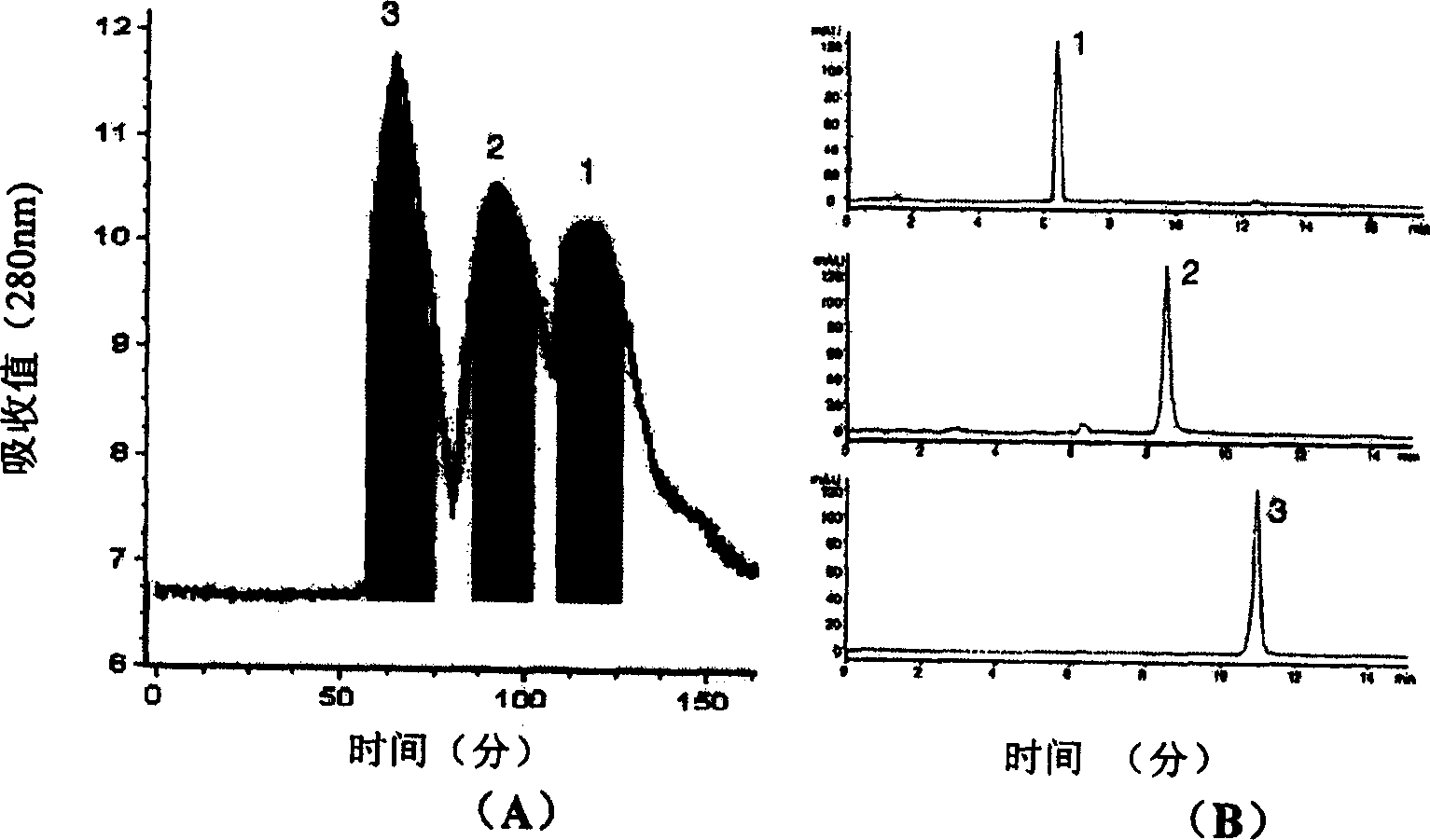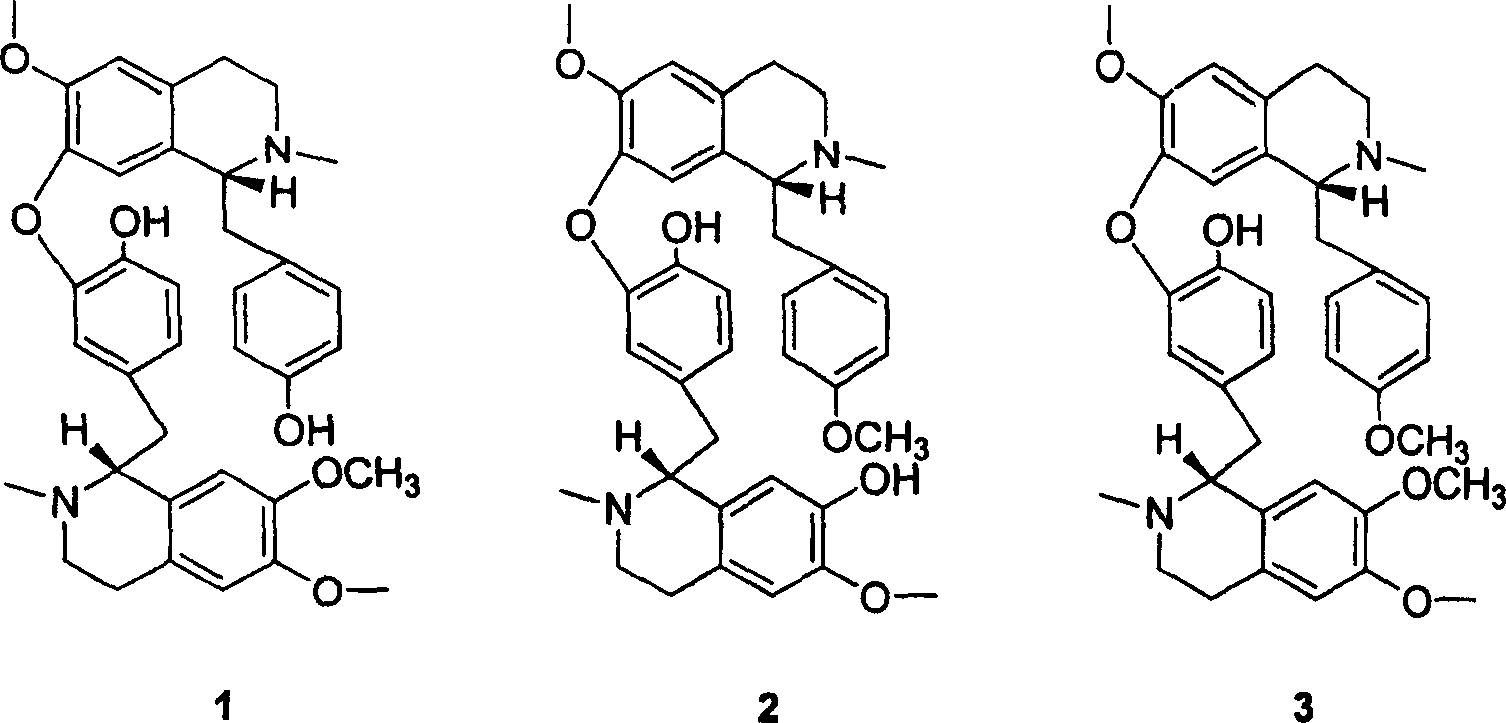Preparation of liensinine, isoliensinine and methylliensinine extracted from lotus seed
A technology of methyl-liensinine and isoliensinine, which is applied in the direction of organic chemistry, can solve problems such as difficult large-scale production, tailing, and difficult formation of crystals, etc., and achieves a mild separation environment, peak-type resolution, and no loss of samples. Effect
- Summary
- Abstract
- Description
- Claims
- Application Information
AI Technical Summary
Problems solved by technology
Method used
Image
Examples
Embodiment 1
[0019] 1. Soak 12kg of dried lotus seed heart powder with 10L of 95% ethanol at room temperature for 48 hours, suction and filter out the solvent, add 10L of 95% ethanol to the filter residue, repeat the above operation three times, combine the extracts and reduce them with a rotary evaporator. Concentrate under pressure to form an extract, and the concentration temperature is 40°C. The obtained extract was dissolved with 4L of 1.5% hydrochloric acid, filtered with suction, and the pH of the filtrate was adjusted to 8.5 with 10% ammonia water, and a pale yellow precipitate was precipitated. Collect the precipitated pale yellow precipitate to obtain 85g crude lotus seed alkaloid. HPLC analysis (such as figure 1 , among the figure 1 is liensinine, 2 is isoliensinine, and 3 is methyl-liensinine) shows that the contents of three main components are respectively 15.4%, 15.9%, 47.6%.
[0020] 2. Separating lotus seed alkaloid extract with countercurrent chromatography. Use petrol...
Embodiment 2
[0037] The preparation method of the crude alkaloid of lotus seed is the same as in Example 1, and the extract of lotus seed alkaloid is separated by countercurrent chromatography. Prepare a two-phase solvent with ethyl acetate, carbon tetrachloride, methanol and water in a volume ratio of 1:6:4:1, and separate the upper and lower phases by standing in a liquid separation container. Dissolve 5850 mg of crude alkaloids of lotus root in 15 ml of the upper phase and 15 ml of the lower phase to form a sample solution. The internal diameter of the countercurrent chromatographic column is 4mm, and the column volume is 1600ml. The above phase is used as the stationary phase, and the lower phase is the mobile phase. After the separation column of the countercurrent chromatograph is filled with the stationary phase, the sample solution is injected into the sampling loop of the countercurrent chromatograph, and the countercurrent chromatograph is turned on at a speed of 450 rpm. The fl...
Embodiment 3
[0039] The preparation method of the crude alkaloid of lotus seed is the same as in Example 1, and the extract of lotus seed alkaloid is separated by countercurrent chromatography. Prepare a two-phase solvent with diethyl ether, ethyl acetate, carbon tetrachloride, methanol and water in a volume ratio of 1:1:7.5:5:1, and separate the upper and lower phases by standing in a liquid separation container. Dissolve 150 mg of the crude alkaloid of lotus root in 1.5 ml of the upper phase and 1.5 ml of the lower phase to form a sample solution. The internal diameter of the countercurrent chromatographic column is 2mm, and the column volume is 380ml. The above phase is used as the stationary phase, and the lower phase is the mobile phase. After the separation column of the countercurrent chromatograph is filled with the stationary phase, the sample solution is injected into the sampling loop of the countercurrent chromatograph, and the countercurrent chromatograph is turned on at a spe...
PUM
 Login to View More
Login to View More Abstract
Description
Claims
Application Information
 Login to View More
Login to View More - R&D
- Intellectual Property
- Life Sciences
- Materials
- Tech Scout
- Unparalleled Data Quality
- Higher Quality Content
- 60% Fewer Hallucinations
Browse by: Latest US Patents, China's latest patents, Technical Efficacy Thesaurus, Application Domain, Technology Topic, Popular Technical Reports.
© 2025 PatSnap. All rights reserved.Legal|Privacy policy|Modern Slavery Act Transparency Statement|Sitemap|About US| Contact US: help@patsnap.com



